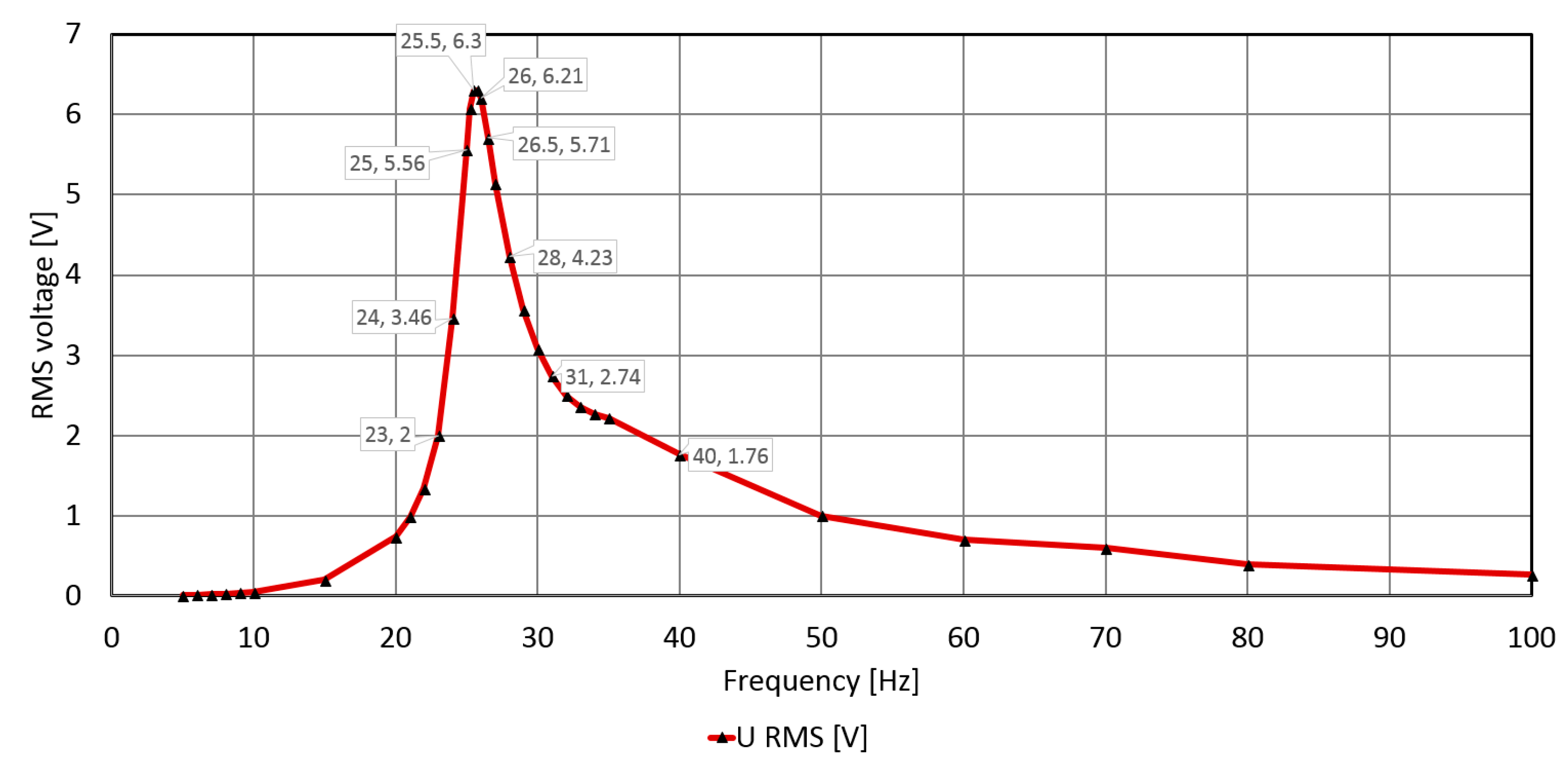Energy Harvesting Powered Wireless Vibration Analyser †
Abstract
:1. Introduction
2. Materials and Methods
- Power management circuit with boost-charger, buck converter and Graetz-bridge rectifier. It is possible to use two energy harvester power sources simultaneously, one with alternating current and the other with direct current (hybrid harvesting). Only one of the two sources can provide current at a time. The built-in MPPT algorithm is responsible to optimally harvest energy from different sources and conditions [2].
- Supercapacitor (470 mF) as the main energy storage component and a LiPo battery (190 mAh) as the backup. The main microcontroller continuously measure the voltage of both energy storage components and with the help of the power path control circuit—switches to the most suitable one (with a priority to the supercapacitor).
- Sensors that comprise of an accelerometer and a temperature-, and humidity sensor.
- RF transceiver that has a built in RF chip and a microcontroller used solely for handling RF transmission.
- The main microcontroller that acts as the master in the system. It initiates measurements, controls the power path, wakes up the RF module if necessary and does the spectrum (DFT—Discrete Fourier Transform) calculations.
3. Results
4. Discussion
Acknowledgments
Conflicts of Interest
References
- Priya, S.; Song, H.C.; Zhou, Y.; Varghese, R.; Chopra, A.; Kim, S.-G.; Kanno, I.; Wu, L.; Sam, H.D.; Ryu, J.; et al. A Review on Piezoelectric Energy Harvesting: Materials, Methods, and Circuits. Energy Harvest. Syst. 2017, 4, 3–39. [Google Scholar] [CrossRef]
- Bandyopadhyay, S.; Chandrakasan, A.P. Platform Architecture for Solar, Thermal, and Vibration Energy Combining with MPPT and Single Inductor. IEEE J. Solid State Circuits 2012, 47, 2199–2215. [Google Scholar] [CrossRef]




Publisher’s Note: MDPI stays neutral with regard to jurisdictional claims in published maps and institutional affiliations. |
© 2018 by the authors. Licensee MDPI, Basel, Switzerland. This article is an open access article distributed under the terms and conditions of the Creative Commons Attribution (CC BY) license (https://creativecommons.org/licenses/by/4.0/).
Share and Cite
Szappanos, M.; Radó, J.; Battistig, G.; Földesy, P.; Volk, J. Energy Harvesting Powered Wireless Vibration Analyser. Proceedings 2018, 2, 884. https://doi.org/10.3390/proceedings2130884
Szappanos M, Radó J, Battistig G, Földesy P, Volk J. Energy Harvesting Powered Wireless Vibration Analyser. Proceedings. 2018; 2(13):884. https://doi.org/10.3390/proceedings2130884
Chicago/Turabian StyleSzappanos, Miklós, János Radó, Gábor Battistig, Péter Földesy, and János Volk. 2018. "Energy Harvesting Powered Wireless Vibration Analyser" Proceedings 2, no. 13: 884. https://doi.org/10.3390/proceedings2130884
APA StyleSzappanos, M., Radó, J., Battistig, G., Földesy, P., & Volk, J. (2018). Energy Harvesting Powered Wireless Vibration Analyser. Proceedings, 2(13), 884. https://doi.org/10.3390/proceedings2130884




